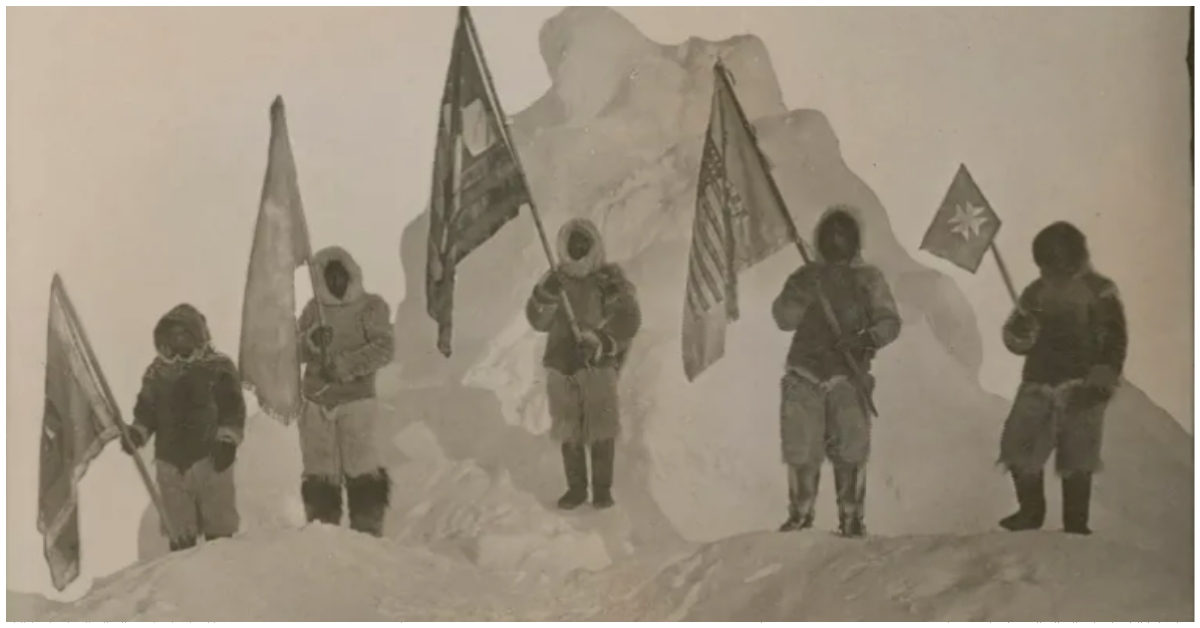A Lifelong Dream Finally Achieved
On April 6, 1909, American explorer Robert Peary accomplished a long elusive dream when he, assistant Matthew Henson and four Inuits reached what they determined to be the North Pole after decades of failed attempts.
Peary, a U.S. Navy engineer, first traveled to Greenland’s interior in 1886. In 1891, Matthew Henson, a young African American sailor, joined Peary’s second Arctic expedition. Their team explored northeast Greenland, now known as “Peary Land.” From 1893 onward, they worked towards reaching the North Pole. In 1906, they came within 150 miles of their goal.
The Epic 1909 Expedition
In 1909, Peary and Henson ventured out again from their ship anchored at Canada’s Ellesmere Island. With Inuit men and 130 sled dogs, they laid supply trails northwards. Only 5 men, including Henson, went on the final push. On April 6, they set up camp and planted the American flag at what they calculated as 90°N.
Henson’s navigation showed they initially overshot by a couple miles. When they corrected their position, Henson’s footprints were the first at the precise spot. So Matthew Henson became the first person to stand at the top of the world.
Henson’s Vital Role Overlooked
When they returned, Peary received all the acclaim mainly because he was the leader. Henson recorded his exploits in “A Negro Explorer at the North Pole” (1912). In the 1950s, he finally gained some official recognition and his remains were reinterred at Arlington National Cemetery near Peary’s monument.
Though Peary’s exact latitude calculation remains questionable, their rare feat inspired generations of explorers who risked their lives to stand where no one had before.





